Various factors may cause a plasma cutting machine not to generate an arc.
Firstly, voltage instability is a common issue, as plasma power sources typically need to be connected to a three-phase 380V voltage. Phase absence or inadequate voltage capacity can result in an inability to strike an arc. Secondly, air intake issues are another significant factor.
Lack of intake or insufficient air pressure can affect the normal arc initiation of the plasma cutting machine.
Solutions to these problems include checking the power supply, replacing the contactor, repairing the internal wiring, and closely monitoring the air compressor’s output pressure display to ensure sufficient pressure.
If you encounter issues with inadequate air pressure, it may be due to insufficient air input from the air compressor, too low pressure regulation by the air regulator valve, blockages in the solenoid valve, or a non-smooth air path.
Therefore, addressing the issue of a plasma cutting machine not generating an arc requires considering all these possibilities and taking appropriate measures.
Plasma Cutter Not Arcing Troubleshooting
The stability of the arc in an NC plasma cutting machine is crucial for the quality of the cuts produced.
If the plasma arc is unstable, it can lead to problems such as uneven cuts, the buildup of edges, decreased performance of the control system components, and the need for frequent replacements of nozzles and electrodes.
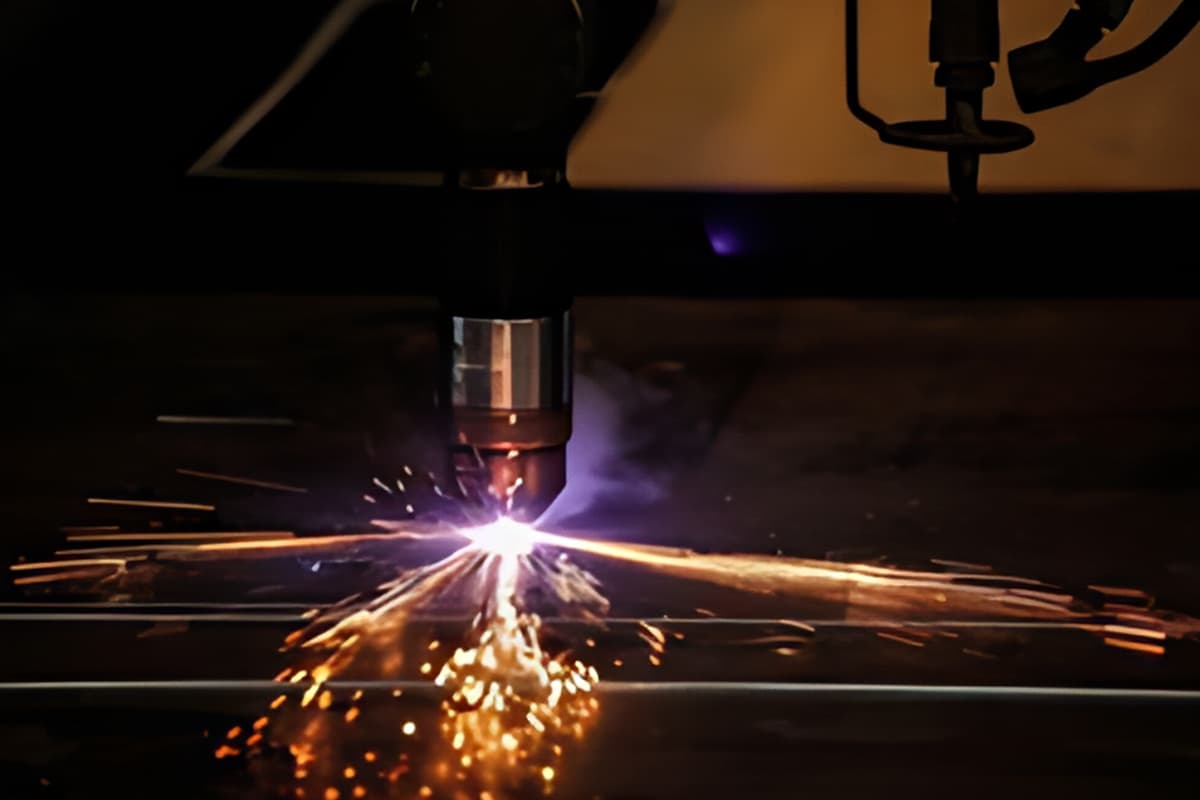
Based on the analysis of this phenomenon, the solutions proposed are as follows:
1. Too high air pressure
If the input air pressure exceeds 0.45Mpa, it can have a negative impact on the plasma cutting process.
The excessive airflow will cause the plasma arc to disperse, weakening the concentration and intensity of the arc column, and reducing its cutting power.
Causes of high air pressure include:
- Improper input air conditioning
- Air filter pressure relief valve-regulated too high
- Air filter relief valve failed
The solution to the problem is:
- Verify that the air compressor pressure is set correctly.
- Check if the pressure between the air compressor and air filter pressure relief valve is in a proper and orderly state.
- If, after starting up, the air filter pressure reducing valve does not respond to adjustments made by rotating the switch and there is no change in the pressure reading on the gauge, this indicates that the air filter pressure reducing valve is not functioning properly and needs to be replaced.
2. Too low air pressure
When using a plasma cutting machine, if the working pressure is significantly lower than the required pressure specified in the specifications, this can negatively impact the cutting quality.
A low working pressure means a weakened plasma arc ejection speed and reduced input airflow, which will prevent the formation of a high-energy and high-speed plasma arc.
This can result in poor cutting quality, incomplete cuts, and the buildup of unwanted material on the cutting edge.
The causes of low air pressure include:
- The compressor is short of air
- The pressure adjustment of air conditioning valve of the plasma cutting machine is too low
- There is oil pollution in the electromagnetic valve
- The air channel is obstructed
The solution to the problem is:
Before operating the plasma cutting machine, it is crucial to inspect the air compressor’s output pressure display and make any necessary adjustments.
If the air pressure input meets the required standards, it is equally important to confirm that the air filter pressure relief valve is properly adjusted and the pressure display meets the plasma cutting requirements.
Proper maintenance of the air filter pressure relief valve must be performed regularly to guarantee the input air is clean and oil-free.
Contaminated air can cause oil buildup in the solenoid valve, making it challenging to open the valve core and leading to an insufficiently opened valve port.
When the torch nozzle pressure is too low, replacing the electromagnetic valve may be necessary.
A reduction in the gas channel cross-section can also lead to low air pressure. In such cases, the air tube can be replaced following the provided instructions.
3. Poor contact between ground wire and workpiece
Proper grounding is an essential step before using a plasma cutting machine.
If the appropriate grounding tool is not utilized, or if the workpiece surface is not properly grounded, the connection between the ground wire and the workpiece will be weak.
It is advisable to use specialized grounding tools to detect any insulation that could negatively impact the connection between the ground wire and the workpiece surface.
Using worn or old ground wires should be avoided.
4. Torch nozzles and electrodes burn out
The causes of premature damage of nozzle:
- Improper installation of the nozzle, such as untightened thread fastening
- Improper adjustment of all gears
- The cooling water doesn’t flow in as required when the cutting torch which needs to be cooled with water is working
- Frequent arcing
The solution to the problem is:
- Adjust the gear position correctly according to the technical requirement of cutting the workpiece
- Check whether the cutting torch nozzle is installed firmly
- Circulate the cooling water in advance if the nozzle needs to pass the cooling water
- When cutting, the distance between the cutting torch and the workpiece should be adjusted according to the thickness of the workpiece
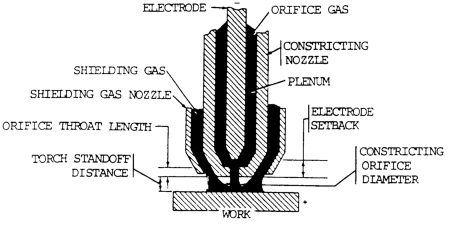
5. The spark generator cannot automatically break the arc
When the plasma cutting machine is in use, the first step is to ignite the plasma arc.
The high-frequency oscillator triggers the gas between the electrode and the nozzle’s inner wall to form a high-frequency discharge that partially ionizes the gas and creates a small arc.
This small arc is then expelled from the nozzle by the compressed air, igniting the plasma arc.
This is the main function of the spark generator.
Typically, the spark generator operates for only 0.5 to 1 second.
If the arc cannot be automatically broken, it is usually because the components of the control circuit board are imbalanced or the gap between the spark generator’s discharge electrode is not set optimally.
The solution to the problem is:
- The discharge electrode of the spark generator should be checked frequently to keep its surface smooth
- Timely adjust discharge electrode gap of spark generator (0.8 ~ 1.2mm)
- Replace the control panel if necessary
6. The input AC voltage is too low
There are significant electrical facilities located on the site where the plasma cutting machine is used.
The malfunction of critical circuit components in the plasma cutting machine can result in an input AC voltage that is insufficient.
To address this problem, the following steps should be taken:
It is important to verify that the power grid connected to the plasma cutting machine has adequate load capacity and complies with the necessary power line specifications.
The plasma cutting machine should be located in a place that is distant from large electrical equipment and areas with electrical interference.
It is recommended to regularly clean dust and debris from components within the plasma cutter and check for worn wires during use.
7. Others
Aside from the previously mentioned causes, the stability of the plasma arc can also be impacted by factors such as a cutting speed that is too slow, the angle of the cutting torch in relation to the workpiece, and the operator’s level of expertise in using the plasma cutter. It is essential for users to keep these factors in mind.
How Can We Accurately Assess the Voltage Stability of a Plasma Cutting Machine?
Firstly, it’s crucial to check if the power supply of the plasma cutting machine is operating normally, ensuring the voltage is stable.
In addition, the grounding of the plasma cutting machine should be inspected to confirm it’s well-grounded. This is because proper grounding can enhance the stability of arc initiation.
On-site, if there are large power-consuming facilities or internal main circuit component failures within the cutting machine, it may result in an excessively low input AC voltage. Therefore, it’s necessary to inspect these situations.
Lastly, further assurance of voltage stability can be achieved by checking the voltage detector or motor regulator for proper functioning. Through these steps, we can more accurately detect and ensure the voltage stability of the plasma cutting machine.
What Are the Common Issues and Solutions for the Air Intake System of a Plasma Cutting Machine?
The common issues with the air intake system of a plasma cutting machine primarily include solenoid valve malfunctions, improper air pressure adjustments, insufficient air pressure, interrupted or inadequate gas supply, and intake blockage or moisture. The solutions to these issues are as follows:
Solenoid Valve Issues: If the plasma cutter isn’t emitting air, the intake solenoid valve should be checked for damage. If the valve is faulty, it needs to be replaced.
Improper Air Pressure Adjustment: Check the air pressure adjustment filter on the back panel of the air plasma cutter, ensuring that the air pressure is neither too high nor too low. Generally, the air pressure should be maintained at about 0.35MPa to ensure the normal formation and arcing of the plasma.
Insufficient Air Pressure: Causes for insufficient air pressure might include inadequate air input from the air compressor, excessively low pressure adjustment of the cutting machine’s air control valve, oil contamination inside the solenoid valve, or an obstructed air path. The solution is to monitor the output pressure of the air compressor before use, adjust the air control valve’s pressure setting as needed, clean the oil contamination inside the solenoid valve, and ensure an unobstructed air path.
Interrupted or Insufficient Gas Supply: Check and reconnect the gas pipeline, increase gas pressure to ensure the continuity and adequacy of the gas supply.
Intake Blockage or Moisture: If the intake is blocked or slightly damp, it needs to be cleaned or replaced to ensure smooth entry of gas into the interior of the cutting machine.
How to Determine if the Input Air Pressure of a Plasma Cutter Is Appropriate?
To determine if the input air pressure of a plasma cutter is appropriate, you first need to understand the air pressure range required for the normal operation of a plasma cutter. According to various sources, the air pressure of an air plasma cutter is generally adjusted between 0.4~0.6MPa, but it is also suggested to adjust the back pressure to 0.2-0.3MPa according to the actual situation.
This indicates that the specific requirements for air pressure may vary depending on the type, thickness of the cutting material, and the cutting speed.
In practical operations, if you encounter situations where the arc does not cut or the cutting effect is poor, it may be due to inappropriate input air pressure.
For example, if the input air pressure is significantly lower than the normal range, it may cause the arc not to start. Therefore, checking the air compressor’s output pressure display to ensure it meets the requirement is an important step in determining whether the air pressure is appropriate.
Also, pay attention to whether the adjustment of the air filter pressure reducer is correct and whether there are any failures, which could cause the air pressure to be too high or too low.
The appropriateness of the input air pressure of a plasma cutter can be determined through the following steps:
- Confirm the recommended air pressure range of the plasma cutter, generally 0.4~0.6MPa, but adjust appropriately according to the specific situation.
- Observe the air compressor’s output pressure display to ensure that the air pressure meets the recommended range.
- Check whether the adjustment of the air filter pressure reducer is appropriate to avoid excessively high or low air pressure due to improper adjustment.
- Consider factors such as the type, thickness, and cutting speed of the cutting material, and adjust the air pressure appropriately according to the actual situation.
By following these steps, you can accurately determine whether the input air pressure of a plasma cutter is appropriate, thus ensuring the smooth progress of the cutting process.
Common Causes of Damage to the Plasma Cutter Torch and Electrode
What are the common causes of damage to the plasma cutter torch and electrode, and what is the guide for their replacement?
These factors can severely affect the function of the plasma system, leading to damage to the torch and electrode.
Regarding the replacement guide, the first step is to turn off the plasma cutter and disconnect the power supply to ensure the equipment is in a safe state.
Then, based on the instructions in the equipment manual, determine the type and location of the consumable parts that need to be replaced, and use appropriate tools such as wrenches and screwdrivers for gentle disassembly.
Consumables like electrodes and nozzles that are prone to wear should be replaced regularly for efficient cutting. During the replacement process, you can consider replacing the entire machine torch and cable assembly, or replace individual components. In addition, using a clean lint cloth to wipe the inside of the nozzle can eliminate oxides, which is an important measure to prevent torch damage.
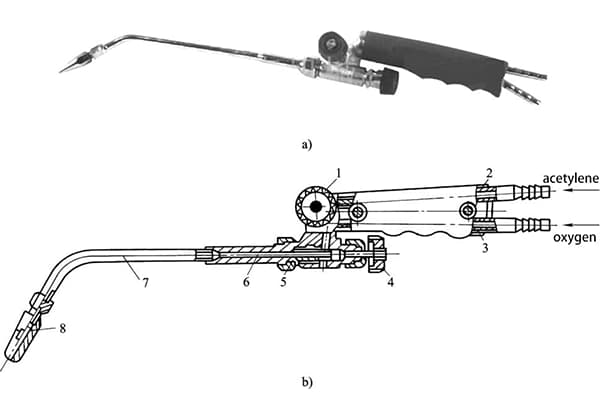
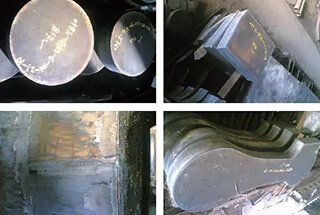
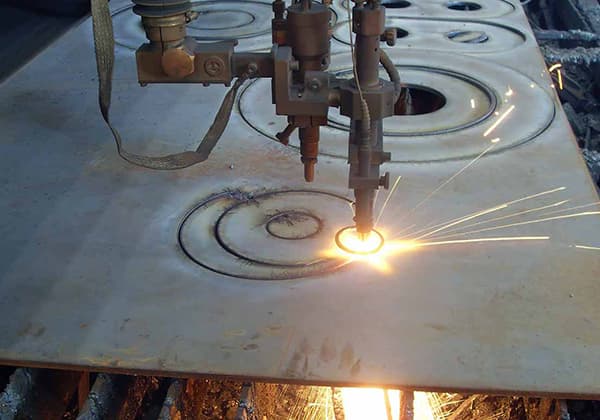
Good morning
We have done troubleshooting recommendations as above, but the the display still appear Error 08. Please propose other solution.
Appreciate your help.
Good morning
Our plasma machine is not arcing automatically but it is working manually have done checked with the software guy and hardware as well but they haven’t diagnose any issue saying everything is perfectly working. So what will be the possibly issue which we are facing
I think this is sensor collision problem,
Check whether the collision LED light blowing during the IHS test., If it’s blowing adjust the sensor wire maybe it is too short to contact the pin.
Else, sensor wire not installed properly maybe the wires are shorter inside the sensor cable, so check the connectivity of the wire everything is fine or not.
Do it and reply
I have a thermal dinamics 70 xl have no cut power has hf sparkle . Air pressure 65 psi has air flow no pressure drop, pilot led comes on with trigger activation then goes out ( about 3 seconds). Thermal tech says I don’t know box it up and send it to him. I don’t have much confidence in parts swappers, I fix welders and generator s for a living. This one just happens to be mine.
What would cause me to have a brief arc then nothing
Cutter. Has pre arc but will not cut when applied to metal
i have the issue where the torch won’t arc on even when i try to press the arc on test from THC it won’t arc ?
Plasma electrode to workpiece fault…..why coming like this notification…. please inform
I take square sharp to cut but it doesn’t cut complete square.
The potable plasma brings the statement”””arc break alarm, why
Generally speaking, if the arc breaking phenomenon of air plasma cutting machine is frequent, the internal electrode of cutting torch should be checked and the electrode gap should be adjusted properly.
Secondly, the compressed air pressure should be between 0.4-0.6mpa, and the air moisture should be less.
If the pressure is too high or too low, it will automatically break the arc and stop working, so as to protect the cutting torch from burning out.
You need to adjust the rear air pressure adjustment knob to make it reach the appropriate pressure. At this time, the machine can work normally.
fan is not coming on. What does 3 wires on torch control go to?
My torch hight not working
1. 15A fuse core circuit breaker: replace it.
2. High air pressure on the pressure reducing valve: adjust the pressure.
3. Parts in the cutting torch are damaged: check and replace.
4. The cutting torch is damp and the moisture in the compressed air is too high: dry and add water filtering device.
5. Arcing circuit breaker: replace it.
6. Cutting torch damage: replace it.